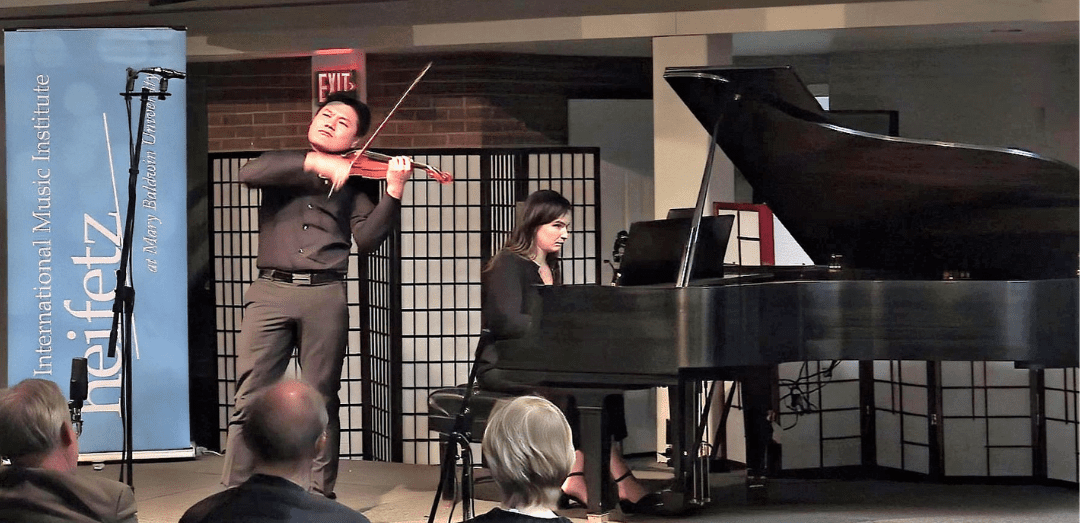“Chinese traditional melodies are beautiful, yet limited in resonating with audiences internationally. I have always been exploring ways to use Western-style music to tell our stories and emotions. It is not an easy job, but it’s fun and inspiring — always.”
– Chen Gang

Shanghai-born composer Chen Gang (b. 1935). “Sunshine Over Tashkurgan” was originally conceived as part of a series of violin pieces the composer wrote during the Cultural Revolution under the title title The Red Violin.” From 1973 to 1976 he composed nine such pieces in the collection, including “The Golden Steel-Smelting Furnace,” and “The Morning of Mount Miao” Strauss Shi describes the piece as “an attempt at writing the Chinese equivalent of a 19th-century violin showpiece by Sarasate or Wieniawskl.”
At our first Heifetz Ensemble in Residence concert of 2022, HEIR violinist and two-time Heifetz Institute alum Strauss Shi, joined by faculty pianist Allison Freeman, brought to a Heifetz stage for the first time what he termed the second most famous composition by Chinese composer Chen Gang: Sunshine Over Tashkurgan. Chen Gang is best known in the West for co-writing the landmark violin concerto The Butterfly Lovers, played memorably at the Heifetz Institute by Ji-Won Song and Beilin Han.
Composed in 1976, “Sunshine,” is similarly based on Chinese folkore. Via TedX: “This work came out of the musical materials of The Tajik ethnic group in Xinjiang, China, along with the unique and strong ethnic customs. The first part, “Singing heartily”, presents the vast and beautiful grassland scenery and the scene of herdsmen riding on horses and singing with strings. The second part, “Dancing enthusiastically”, gives full play to the complex, changeable, agile and flexible skills and shows the jubilant dancing of the Tajik people.”
It is one of the most frequently performed violin showpieces in China, and now has received its first bravura performance in HeifetzLand!


